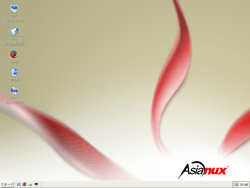Asianux
Asianux was a Linux distribution. It is a joint development between Linux vendors Red Flag Software of China, Miracle Linux of Japan (50.5-percent owned by Oracle Corporation), Hancom of South Korea, VietSoftware of Vietnam (from September 2007), WTEC from Thailand (from December 2008)[1] and Enterprise Technology (Pvt) Limited of Sri Lanka (from July 2010). It is distributed and marketed by Red Flag Software and Miracle. Asianux is designed as a core component or basis for a Linux distribution, which would be released by related companies as their own distributions with distinct features. Localized languages include Chinese, Japanese, Korean and English. Comparisons have been drawn between Asianux and United Linux, an attempt by SUSE, Turbolinux, Conectiva and the SCO Group to take on Red Hat Enterprise Linux.[2]
 | |
 Screenshot of the Asianux operating system - version 2.0 | |
| OS family | Linux (Unix-like) |
|---|---|
| Latest release | 7.0 (Lotus) / July 24, 2015 |
| License | Various |
| Official website | Asianux website |
Release history
The current release version of Asianux is 7.0 (2015), other earlier releases were version 4.0 (July 18, 2011) and version 3.0 (September 22, 2007).
An earlier release version of Asianux was 2.0 (August 31, 2005), which was based upon Red Hat Enterprise Linux 4. The initial release was Asianux 1.0, released in 2004. Asianux 1.0 was based upon Red Hat Enterprise Linux 3.
References
- "Asianux Concludes Triumphant Year, Welcomes Fifth Member". Asia Corporate News Network. 2008-12-22.
- Ladislav Bodnar (2004-06-23). "A First Look at Asianux 1.0". LWN.net.